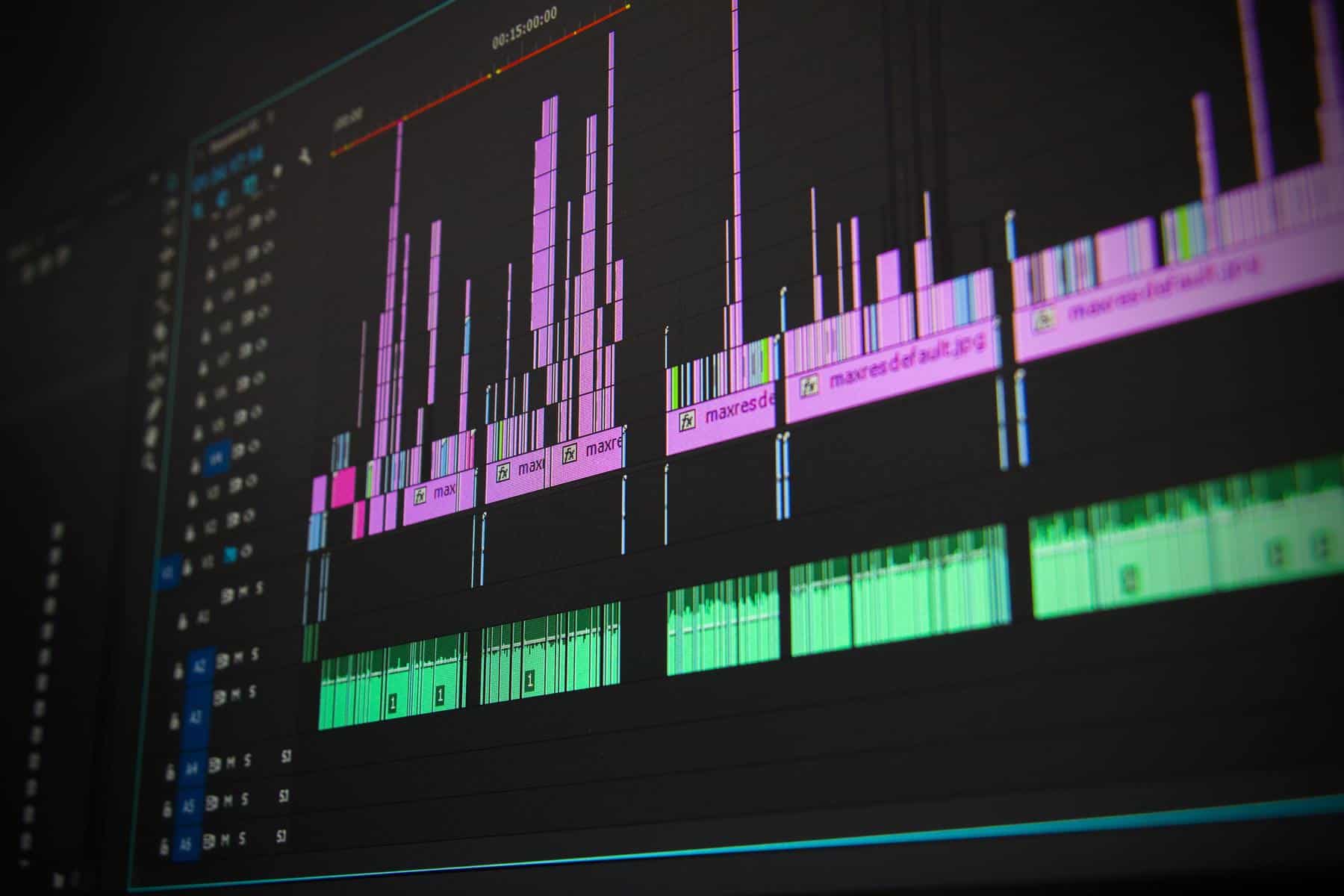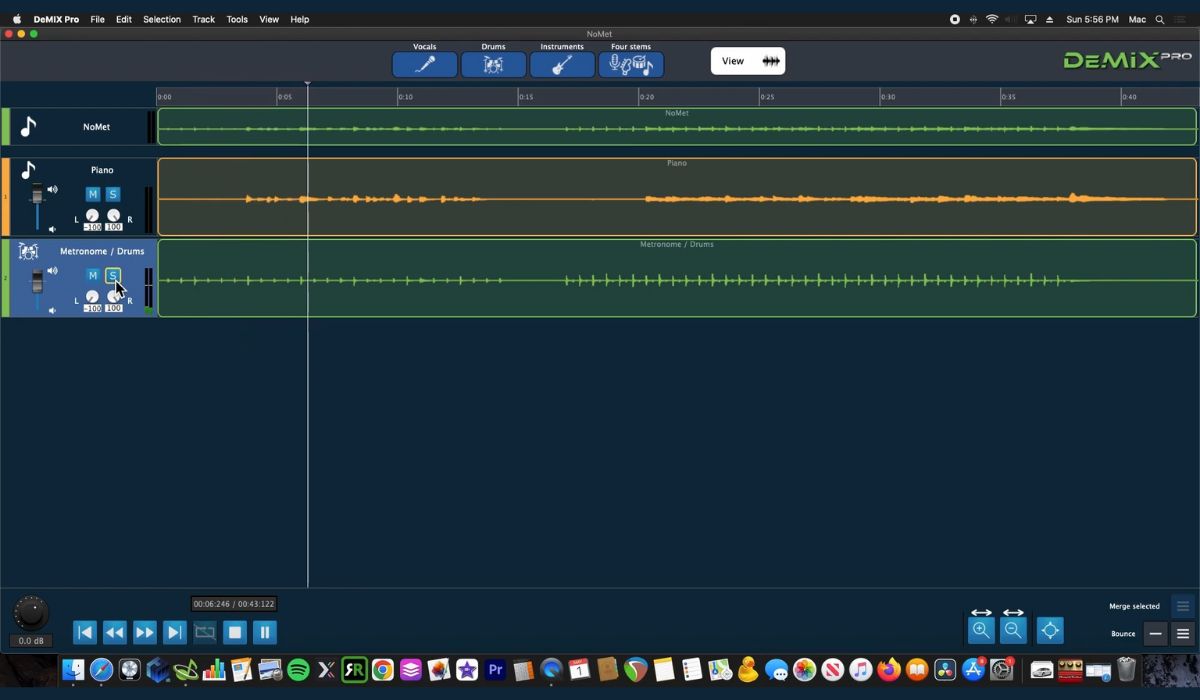Home>Production & Technology>Background Music>How To Remove Background Music From Vocals


Background Music
How To Remove Background Music From Vocals
Published: October 28, 2023
Learn how to remove background music from vocals using simple techniques. Get step-by-step instructions and tips on removing unwanted music from your audio recordings.
(Many of the links in this article redirect to a specific reviewed product. Your purchase of these products through affiliate links helps to generate commission for AudioLover.com, at no extra cost. Learn more)
Table of Contents
Introduction
Background music plays a pivotal role in setting the ambiance and enhancing the overall experience of audio-visual content, such as films, TV shows, and advertisements. However, there are instances when we may want to remove the background music from vocals to focus solely on the spoken words or isolate the vocals for various purposes, such as remixing or karaoke. In such cases, having the knowledge and tools to remove background music without affecting the vocals can be incredibly valuable.
Fortunately, there are several methods available that allow us to selectively remove background music from vocals. In this article, we will explore effective techniques and tools that can help you achieve this without compromising the quality of the vocals. Whether you are an aspiring musician, a video content creator, or simply a curious individual, this guide will empower you to manipulate audio and extract vocals with ease.
Before diving into the various methods, it’s important to understand the relationship between background music and vocals. Background music is typically mixed into a track alongside the vocals, creating a layered audio experience. Removing the background music requires separating it from the lead vocals, which can be challenging due to the shared frequency range and sonic similarities.
However, with advancements in technology and the availability of advanced software and online tools, removing background music has become more accessible than ever before. From audio editing software to AI-powered vocal removers and online tools, there are multiple avenues to explore based on your preferences and requirements.
So, if you’re ready to uncover the secrets of removing background music from vocals and unlock a world of audio possibilities, let’s jump right in and explore the methods and tools at your disposal.
Understanding the Background Music and Vocals
Before we delve into the methods of removing background music from vocals, it’s essential to have a basic understanding of how background music and vocals are intertwined in audio recordings. This comprehension will assist us in approaching the removal process effectively.
Background music, also known as backing track or instrumental track, is the accompanying music that plays in the background of a recording. It adds depth, emotion, and atmosphere to the audio, enhancing the overall experience for the listener. Background music can vary in genre, style, and intensity depending on the desired effect. It could be anything from a gentle piano melody in a romantic scene to an upbeat rock track in an action sequence.
On the other hand, vocals refer to the human voice or singing that forms the key element of a song or spoken content. Vocals convey the lyrics or dialogue and are usually the central focus of the audio. They carry the emotions, messages, and narrative of the piece, giving it a personal and expressive touch.
When recording a song or spoken content, the background music and vocals are mixed together to create a cohesive and engaging audio track. The challenge arises when we want to isolate the vocals or remove the background music entirely, as the two elements share the same frequency spectrum and often occupy similar sonic spaces.
To separate the vocals from the background music, we need to employ techniques that exploit the differences in the audio components. These techniques utilize various processing methods, such as frequency filtering, phase cancellation, or machine learning algorithms, to attenuate or eliminate the background music while preserving the vocals.
It’s important to note that the success of separating the vocals from the background music varies depending on the recording quality, the complexity of the mix, and the specific tools or methods used. While some methods may yield excellent results, others may only provide partial isolation or introduce artifacts into the audio. It’s crucial to manage your expectations and be prepared for different outcomes based on the specific circumstances.
Now that we have a clearer understanding of background music and vocals, let’s explore different methods and tools that can help us remove background music and extract vocals effectively and efficiently.
Method 1: Using Audio Editing Software
One of the most common and powerful methods to remove background music from vocals is by using audio editing software. With the right tools and techniques, you can precisely manipulate the audio tracks to separate the vocals from the background music. Here’s a step-by-step guide on how to do it.
- Import the audio file: Open your audio editing software and import the audio file containing the vocals and background music. Ensure that you have a high-quality audio file for the best results.
- Identify the vocals: Listen to the audio file and locate sections where the vocals are most prominent. This will help you create reference points for separating them from the background music.
- Use EQ and filters: Apply equalization (EQ) and filtering techniques to attenuate the frequencies occupied by the background music. Experiment with different EQ settings to find the right balance between reducing the music and preserving the vocals.
- Audition and adjust: Repeatedly listen to the modified audio and make adjustments as necessary. It may require fine-tuning the EQ settings or applying additional filters to further isolate the vocals.
- Apply panning and stereo effects: Utilize panning techniques and stereo effects to enhance the separation between the vocals and the background music. By adjusting the stereo field, you can create a wider space for the vocals to stand out.
- Export the vocals: Once you are satisfied with the results, export the isolated vocals as a separate audio file. You can then use this file for further processing or any other creative purposes.
It’s important to note that removing background music entirely without affecting the quality of vocals is often a challenging task, especially if the mix is complex or heavily intertwined. The success of this method largely depends on the recording quality and the skills of the audio engineer or editor using the software. In some cases, there may be residual artifacts or remnants of the background music that cannot be completely eliminated.
Popular audio editing software such as Adobe Audition, Audacity, and Logic Pro X provide various tools and features to help you in the process of removing background music from vocals. These tools include EQ, filters, and stereo effects that enable precise manipulation of the audio tracks. Experimentation and practice with these tools will help you achieve the best possible results.
Remember that removing background music while preserving the vocals is a skill that improves with experience and practice. Don’t be discouraged if you don’t achieve perfection right away. Keep honing your audio editing skills and experimenting with different techniques to enhance your abilities in isolating vocals from background music.
Method 2: Applying an AI-powered Vocal Remover
Advancements in artificial intelligence have paved the way for powerful vocal remover tools that utilize machine learning algorithms to separate vocals from background music. These AI-powered tools analyze the audio and identify the characteristic patterns of vocals, allowing for a more streamlined and automated process. Here’s how you can use an AI-powered vocal remover to extract the vocals from a music track.
- Select a reliable AI-powered vocal remover: There are several online platforms and standalone software applications that offer AI-powered vocal remover capabilities. Research and choose a reputable and trusted tool that suits your requirements and provides the desired level of audio quality.
- Upload the audio file: Access the vocal remover tool and upload the audio file that contains the vocals and background music. Ensure that you have a high-quality audio file for the best results.
- Process the audio: The AI-powered vocal remover tool will analyze the audio and apply its machine learning algorithms to separate the vocals from the background music. The duration of this process may vary depending on the length and complexity of the audio file.
- Preview and adjust the parameters: After the vocal separation process is complete, you can preview the results and make adjustments if necessary. Some vocal remover tools offer options to fine-tune the vocal extraction parameters, allowing you to customize the output to your liking.
- Download the extracted vocals: Once you are satisfied with the vocal extraction, you can download the isolated vocals as a separate audio file. This file can be further processed or used for any desired purpose.
AI-powered vocal remover tools can be a quick and convenient solution for extracting vocals from background music, especially for those who may not have extensive experience in audio editing. However, it’s important to note that the results may vary depending on the complexity of the audio mix and the capabilities of the specific vocal remover tool used.
Some AI-powered vocal removers may provide excellent results, effectively separating the vocals from the background music. However, there may be cases where residual artifacts or remnants of the music are present in the extracted vocals. It’s essential to manage your expectations and be prepared for some level of imperfection in the extracted vocal track.
Popular AI-powered vocal remover tools include PhonicMind, Spleeter, and DeepRemix. These tools leverage the power of machine learning and neural networks to achieve vocal extraction from background music. Experiment with different tools to find the one that best suits your needs and produces the desired results for your specific audio files.
Remember to respect copyright laws and only use AI-powered vocal remover tools for audio files that you have the legal rights to modify. These tools are meant to assist in audio manipulation for personal use or for creative projects that adhere to copyright regulations.
Method 3: Utilizing an Online Vocal Remover Tool
If you’re looking for a quick and hassle-free way to remove background music from vocals, utilizing an online vocal remover tool can be an excellent option. Online vocal remover tools provide a simple and user-friendly interface, allowing you to separate vocals from background music without the need for complex software installations. Here’s how you can make use of an online vocal remover tool.
- Find a reliable online vocal remover tool: There are numerous online platforms that offer vocal remover tools, such as PhonicMind, Remove Vocals, and Vocal Remover Pro. Research and choose a trusted tool that fits your requirements.
- Upload your audio file: Access the chosen online vocal remover tool and upload the audio file containing the vocals and background music. Ensure that your file meets the stated requirements regarding file format, size, and quality.
- Process the audio: Once the audio file is uploaded, follow the instructions provided by the tool to initiate the vocal removal process. The tool will analyze the audio and attempt to separate the vocals from the background music.
- Preview and adjust (if available): Some online vocal remover tools offer a preview of the processed audio. You can listen to the extracted vocals and make adjustments if necessary. Adjustments may include fine-tuning the vocal extraction parameters or applying additional effects to enhance the quality of the isolated vocals.
- Download the extracted vocals: Once you are satisfied with the vocal extraction, you can download the separated vocals as a separate audio file. This file can be further edited, mixed, or used for any desired purpose.
Online vocal remover tools offer a convenient and accessible solution for removing background music from vocals, eliminating the need for complex audio editing software. However, it’s important to note that the quality of the extracted vocals may vary depending on the individual tool and the characteristics of the audio recording. Some online tools may have limitations in terms of the complexity of the mix they can handle or the level of background music removal they can achieve.
It’s also worth considering that online vocal remover tools typically process audio files on external servers, meaning that your files may be stored temporarily on these servers for the duration of the processing. If privacy and data security are a concern, it is advisable to research and choose a vocal remover tool that prioritizes user data confidentiality.
Online vocal remover tools can be an excellent resource for individuals who are not familiar with audio editing software or who require a quick and straightforward solution for separating vocals from background music. However, it’s always recommended to explore other methods and tools for more complex audio recordings or when higher precision is needed.
Method 4: Removing Background Music through Inverting Phase
Removing background music from vocals through phase inversion is a technique that can be effective in certain cases, particularly when the instrumental track is available separately from the vocals. This method relies on canceling out the instrumental track by inverting its phase and mixing it with the original audio. Here’s how you can utilize phase inversion to remove background music from vocals.
- Obtain the instrumental track: Firstly, you need to obtain the instrumental track of the same song or audio recording. The instrumental track should ideally be a clean version without any vocals. If you don’t have access to the instrumental track, you can search for it on various music platforms or consider using instrumental versions/cover songs available online.
- Import both tracks into an audio editing software: Open your audio editing software (e.g., Adobe Audition, Audacity) and import both the original audio file containing the vocals and the instrumental track.
- Align the tracks: Make sure that both tracks are properly aligned and synchronized in your audio editing software. It’s crucial that the timing of the vocals and instrumental track match perfectly to achieve accurate phase inversion.
- Invert the phase of the instrumental track: In your audio editing software, locate the instrumental track and apply phase inversion. This process will reverse the polarity of the instrumental track, effectively inverting its waveform.
- Mix the inverted instrumental track with the original audio: Adjust the volume levels of the inverted instrumental track and the original audio, and then combine them by mixing both tracks together. The phase-inverted instrumental track will cancel out the corresponding frequencies in the original audio, isolating the vocals.
- Preview and make any necessary adjustments: Listen to the mixed audio and make any necessary adjustments to the volume levels or phase inversion settings to refine the vocal isolation. Tweaking these parameters will help you achieve the best possible results.
- Export the isolated vocals: Once you are satisfied with the results, export the mixed audio as a separate file, containing the isolated vocals without the background music.
It’s important to note that the success of this method heavily relies on having access to the instrumental version of the track and obtaining a clean separation between the instrumental and vocal tracks. In cases where the instrumental track is not available separately or where the mix is complex, this method may not yield satisfactory results. Additionally, background noise or other elements in the audio recording can also interfere with the phase inversion process, affecting the quality of the vocal isolation.
Overall, the phase inversion technique can be a useful method for removing background music from vocals when applied to the right audio recordings. It’s worth experimenting with this method, especially if you have access to instrumental versions of the songs you want to work with.
Conclusion
Removing background music from vocals can open up a world of possibilities, whether you’re a musician looking to create remixes, a filmmaker in need of clean dialogue tracks, or simply someone who wants to enjoy the vocals in their favorite songs without distractions. Throughout this article, we have explored different methods and tools that can help you achieve this goal.
Using audio editing software provides a comprehensive approach to separating vocals from background music, offering precise control over the audio tracks. AI-powered vocal remover tools leverage machine learning algorithms to automate the process, making it accessible to those without advanced audio editing skills. Online vocal remover tools offer a quick and convenient solution for separating vocals from background music without the need for complex software installations. Lastly, phase inversion can be effective when working with instrumental tracks separately from the vocals.
While these methods and tools provide various options for removing background music from vocals, it’s important to note that each technique has its own strengths and limitations. The results may vary depending on the complexity of the audio mix, recording quality, and the specific tools or software used. It’s essential to manage your expectations and experiment with different approaches to find the method that works best for your specific needs and audio recordings.
Remember that removing background music is not always a flawless process, and some remnants of the music may still be present in the extracted vocals. Furthermore, it’s important to respect copyright laws and only modify audio files that you have the legal right to manipulate.
By understanding the relationship between background music and vocals and utilizing the methods and tools at your disposal, you can embark on an exciting journey of audio manipulation. Whether you’re a music enthusiast, content creator, or audio professional, the ability to remove background music from vocals opens up new creative opportunities and allows you to focus on the essence of the vocals themselves.
So, go ahead and explore the techniques discussed in this article, experiment with different methods, and enjoy the pleasure of extracting vocals and diving deep into the world of audio manipulation. With practice and persistence, you’ll gain the skills to master the art of removing background music from vocals and create captivating and unforgettable audio experiences.











